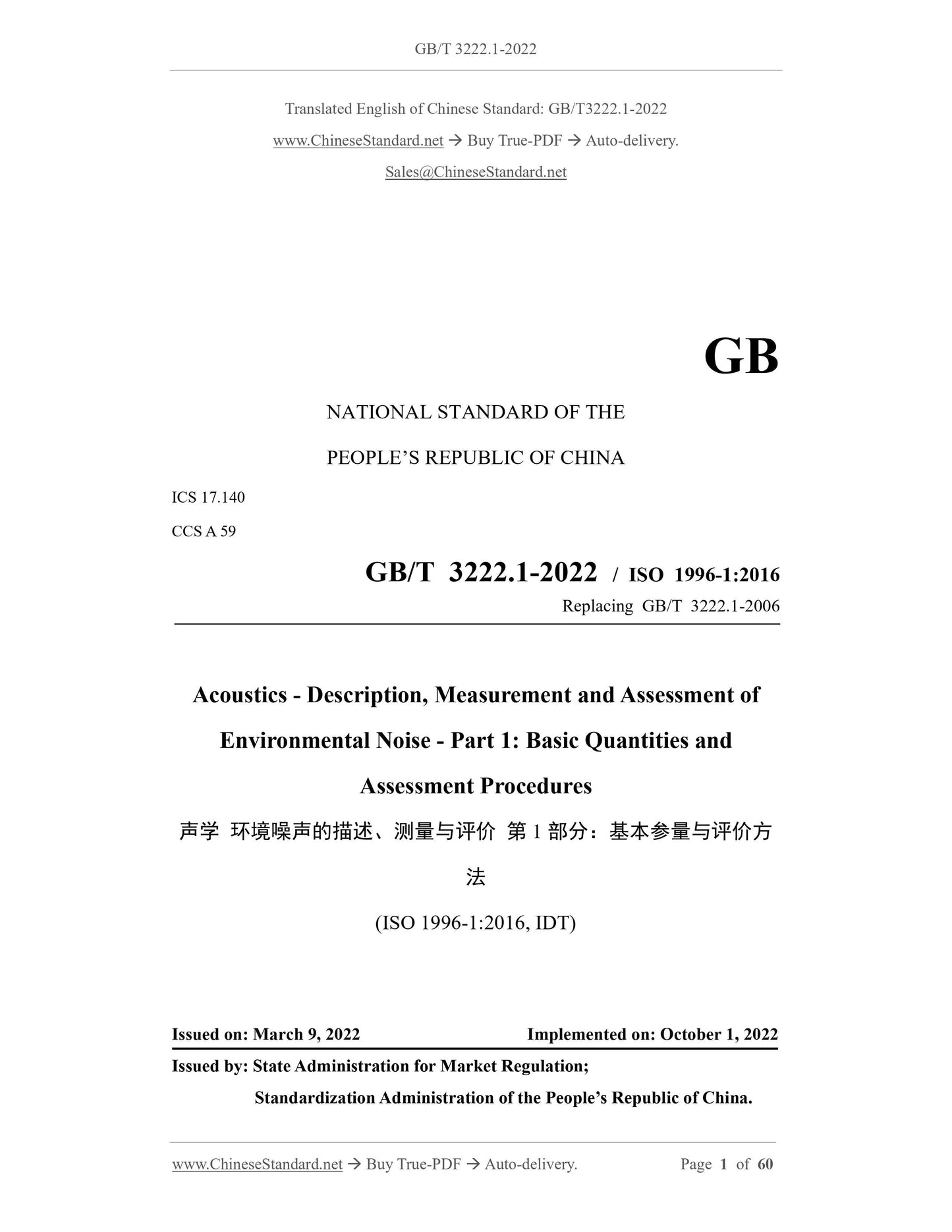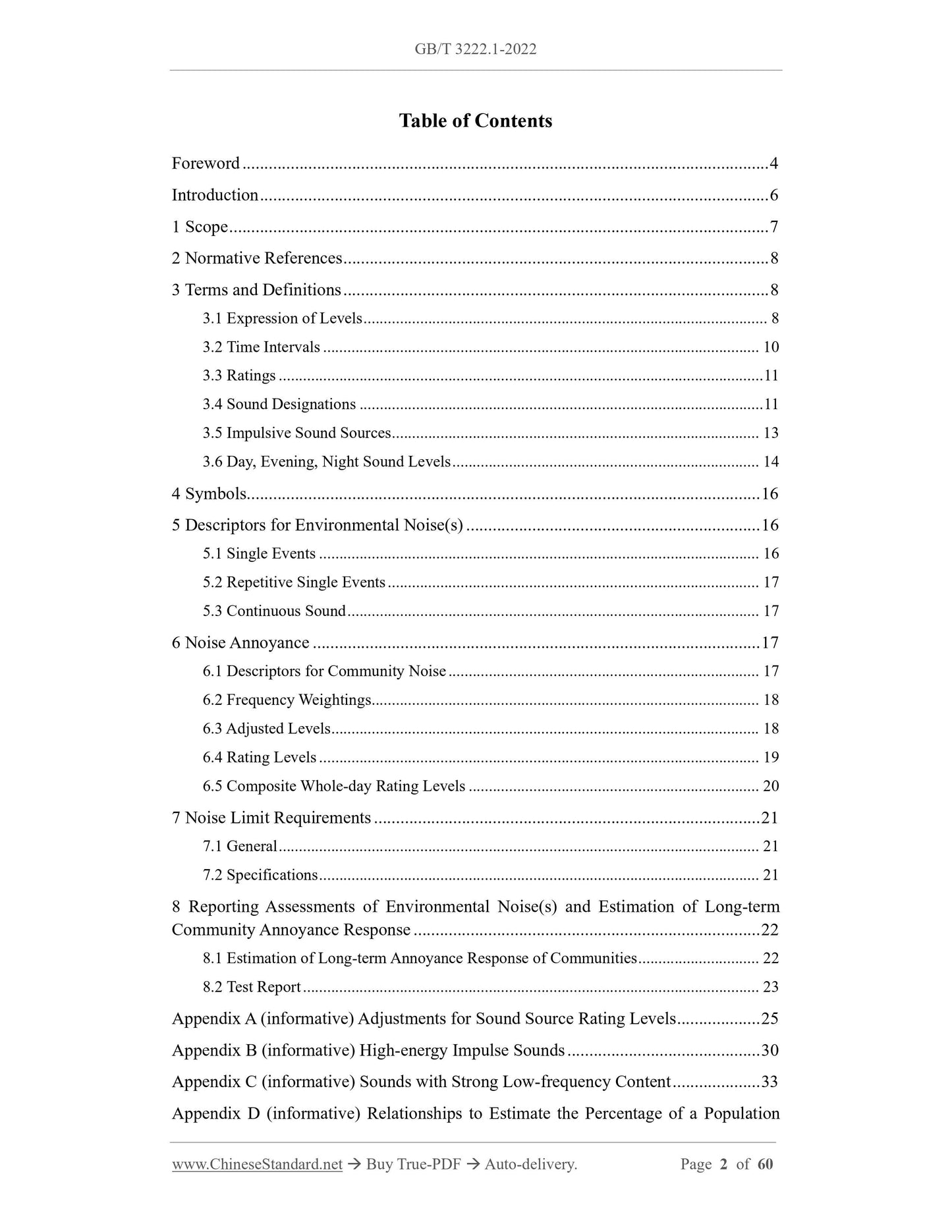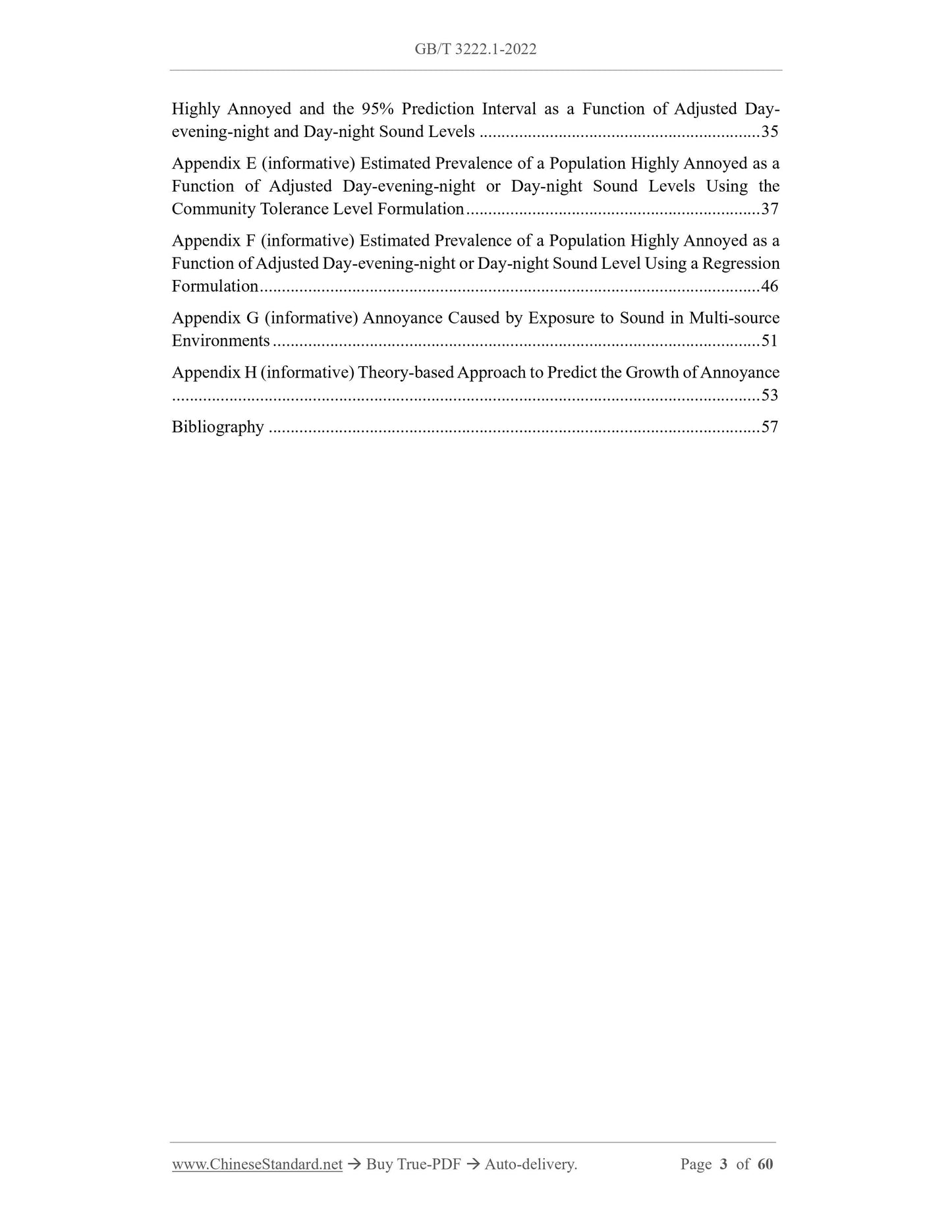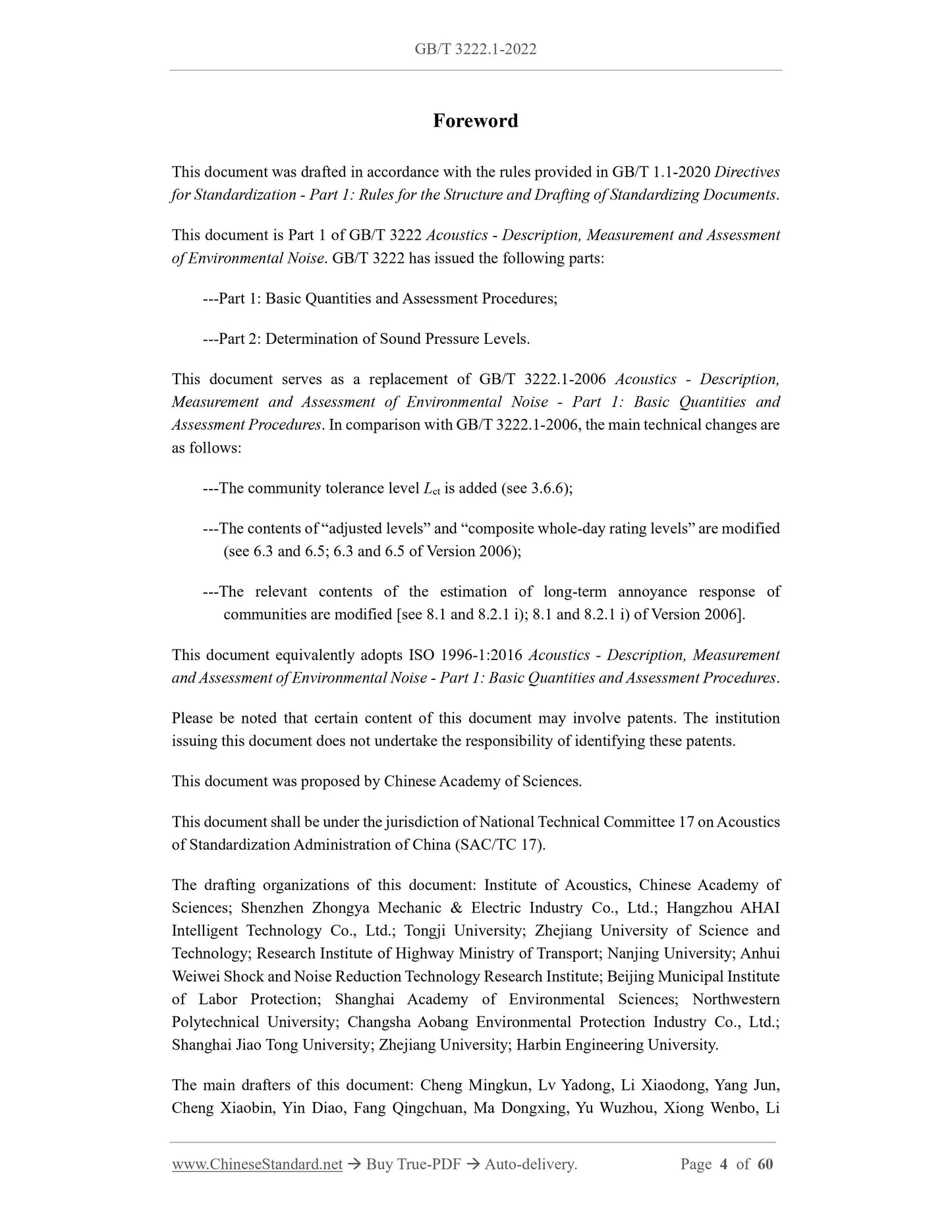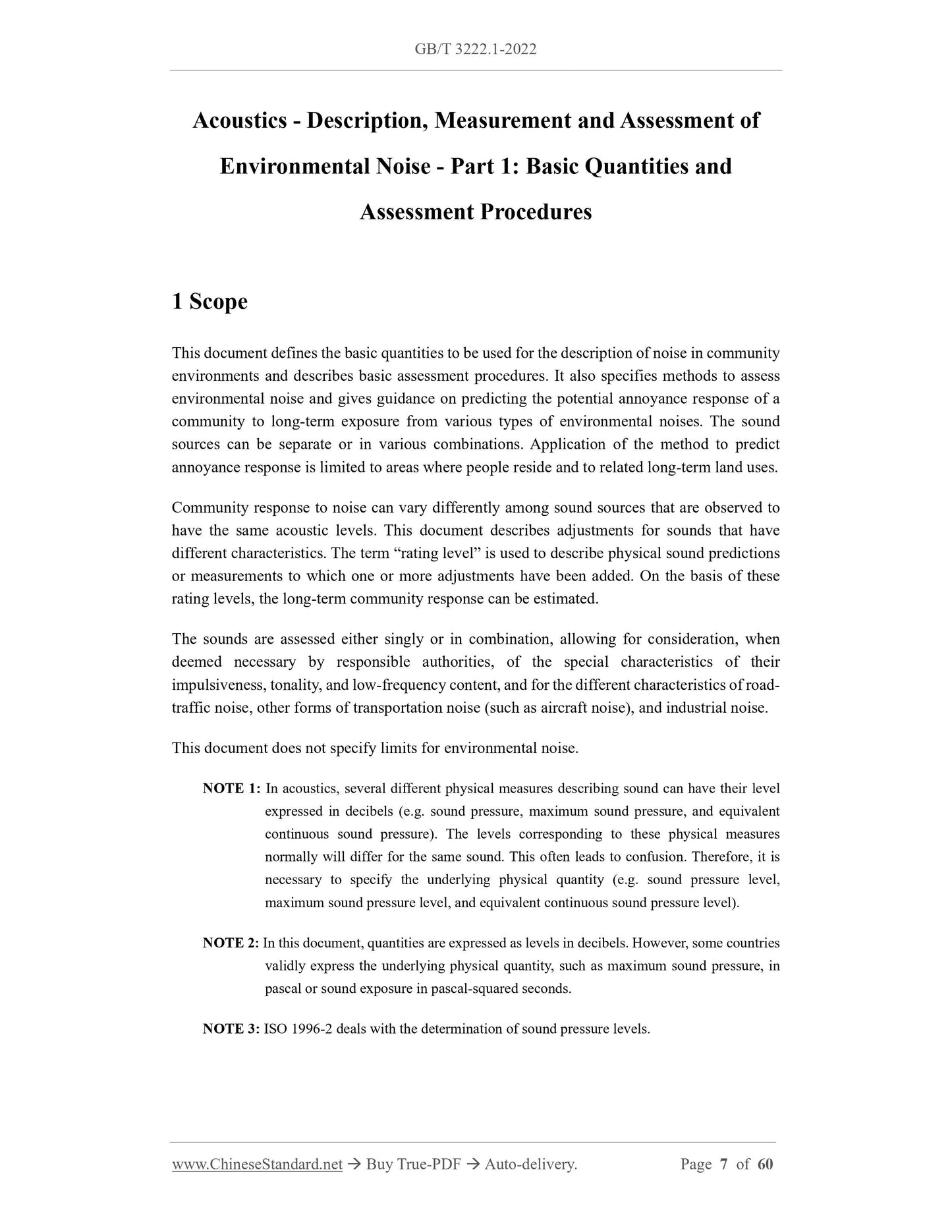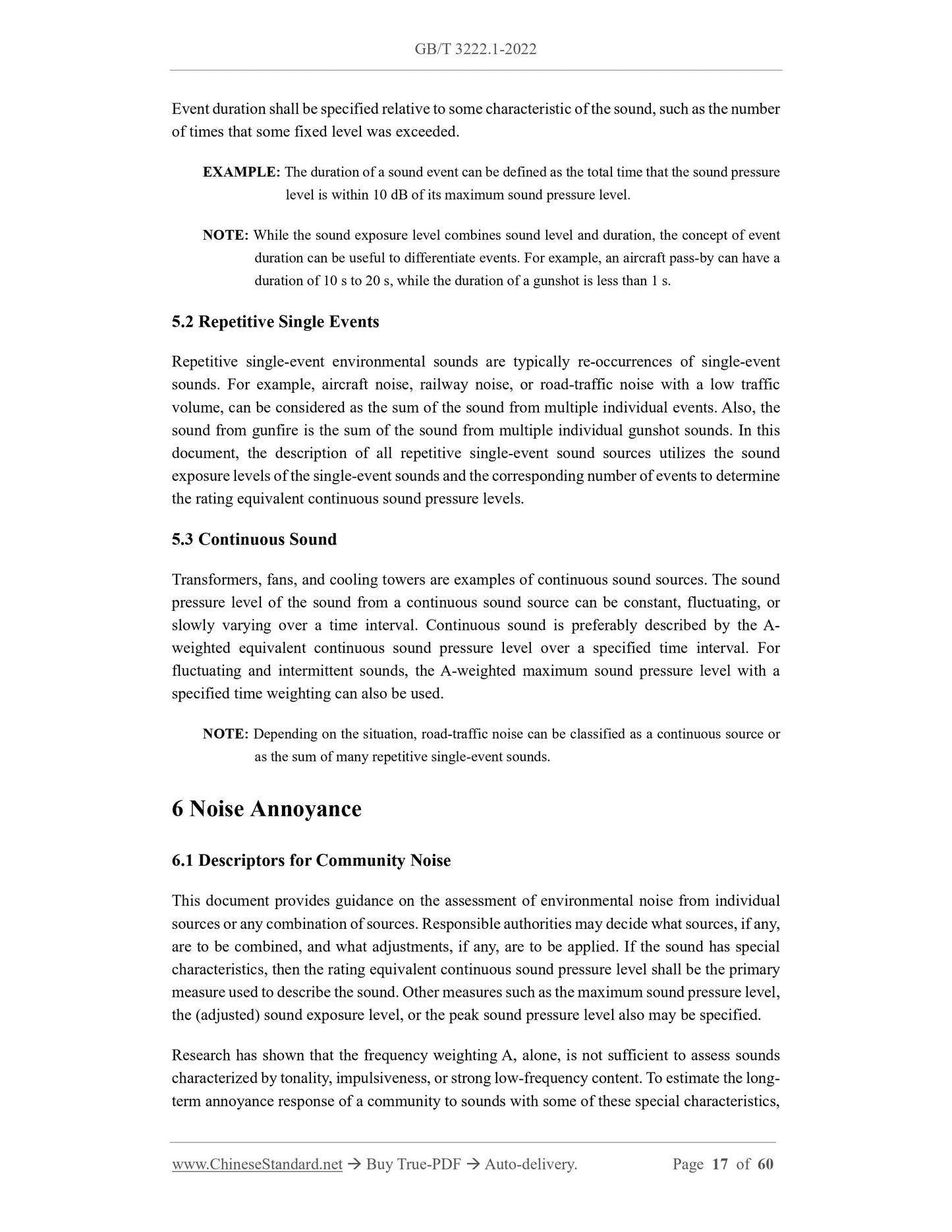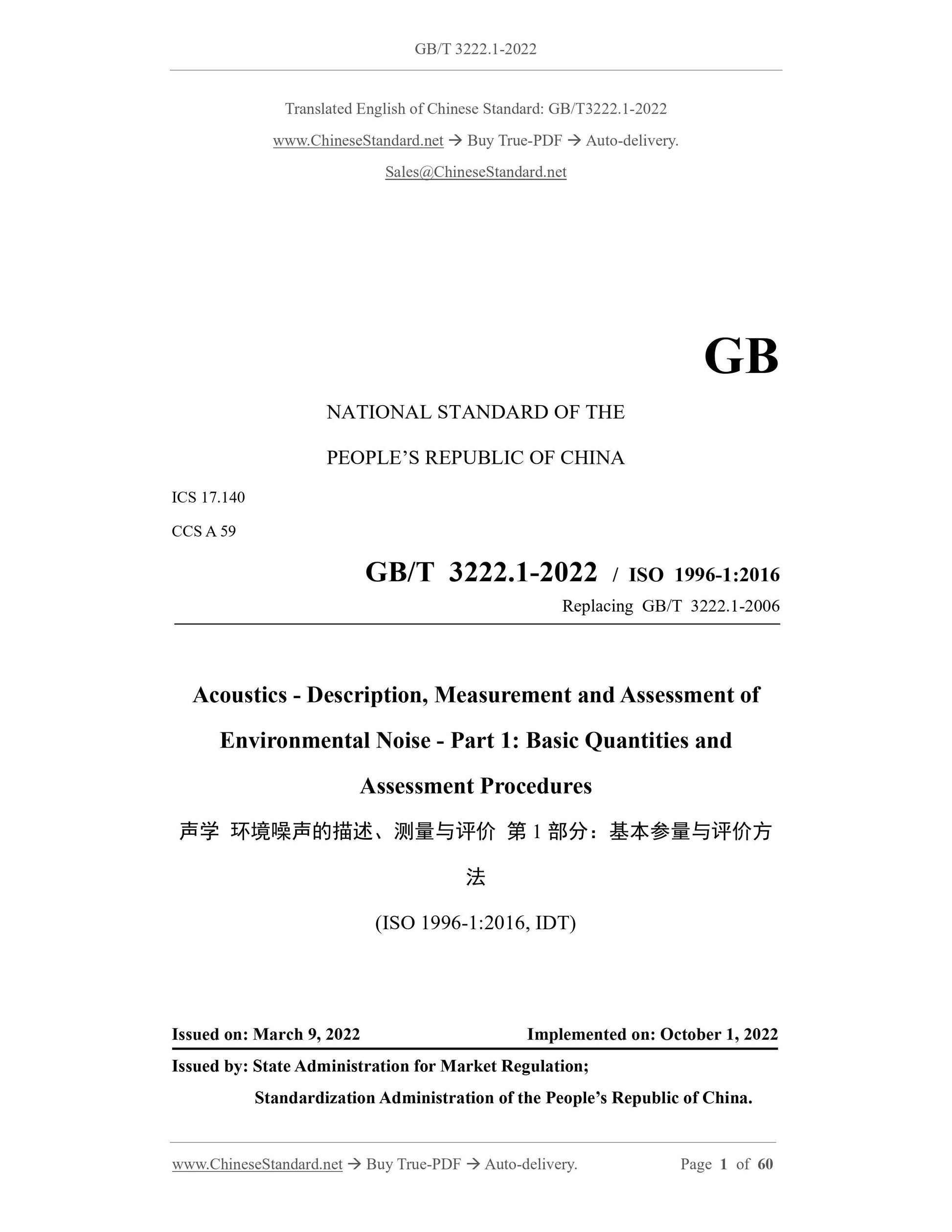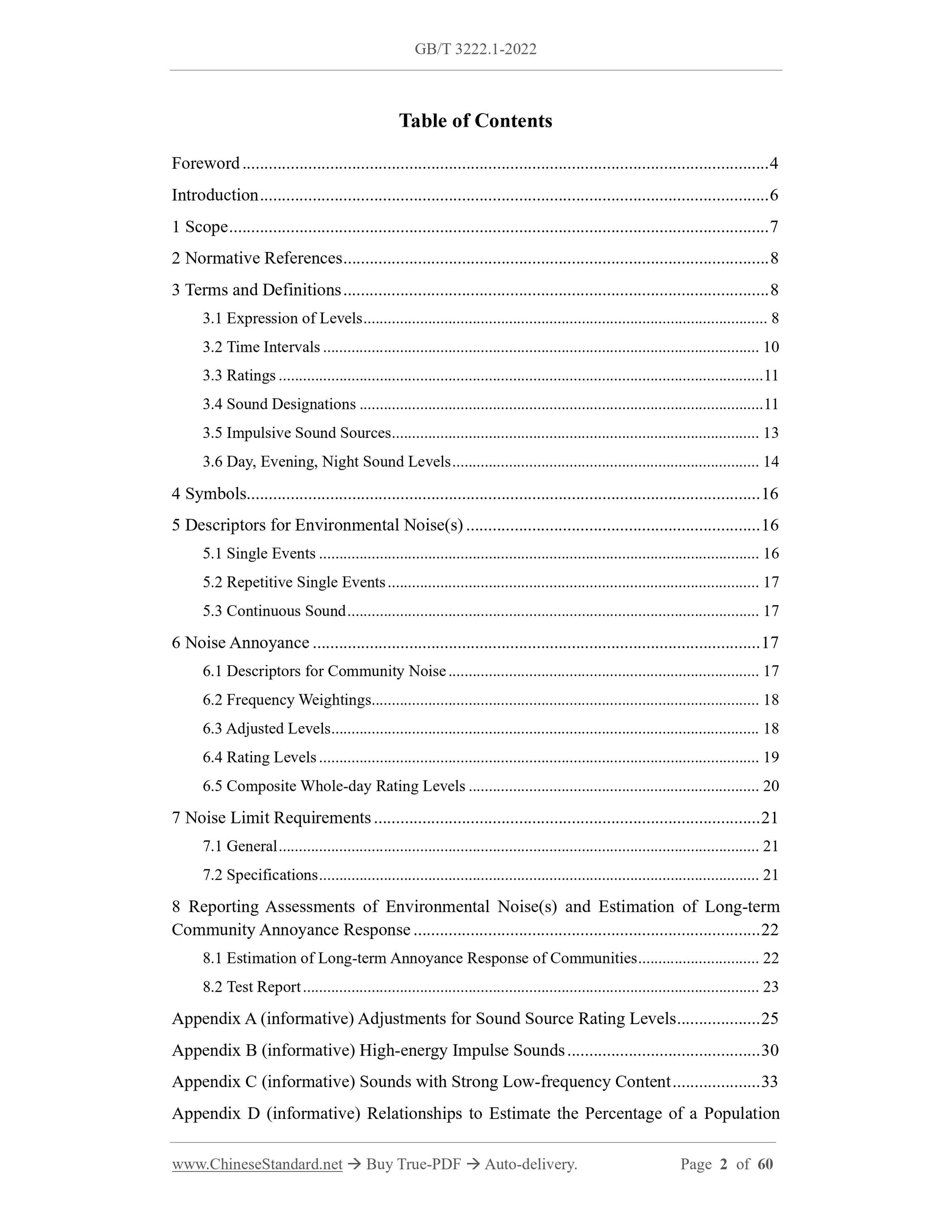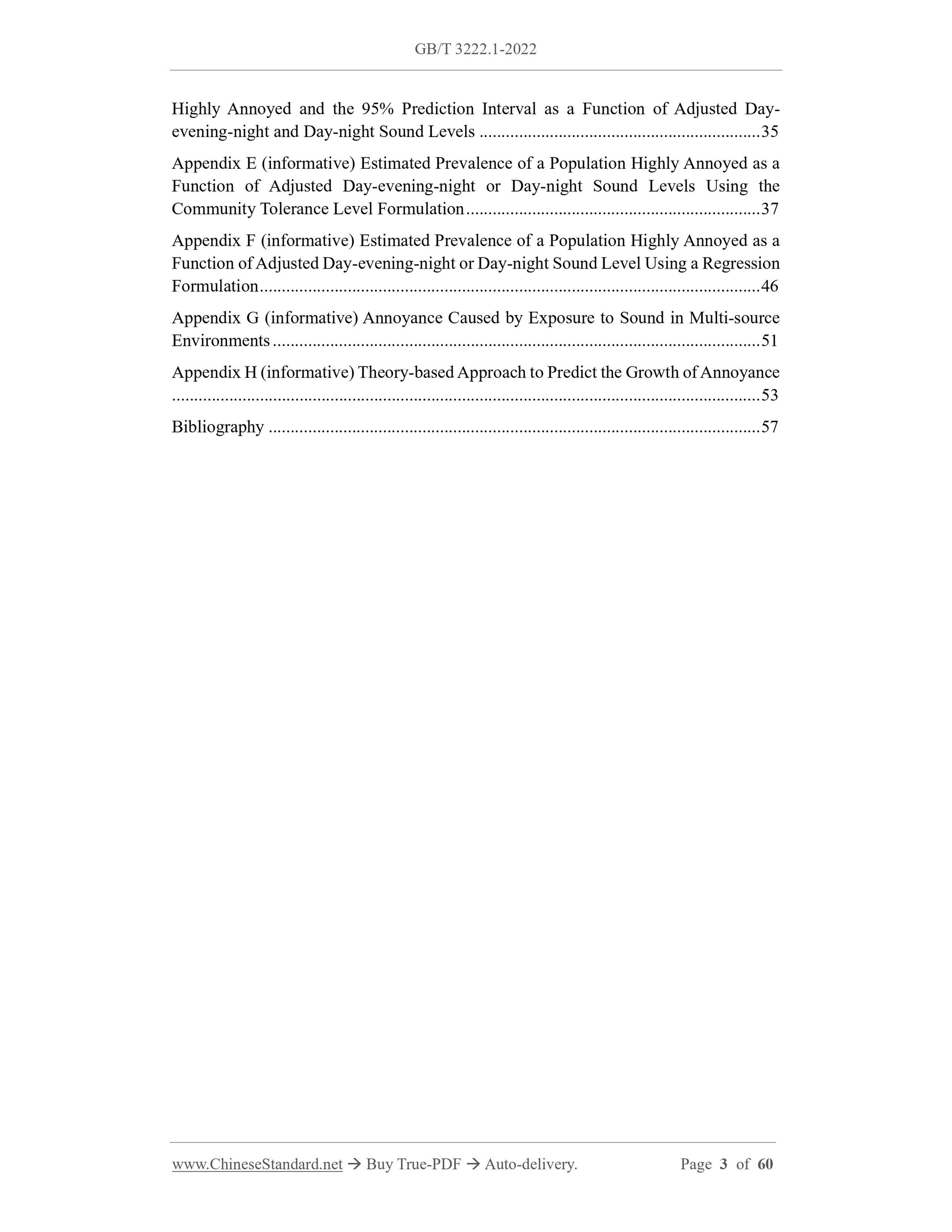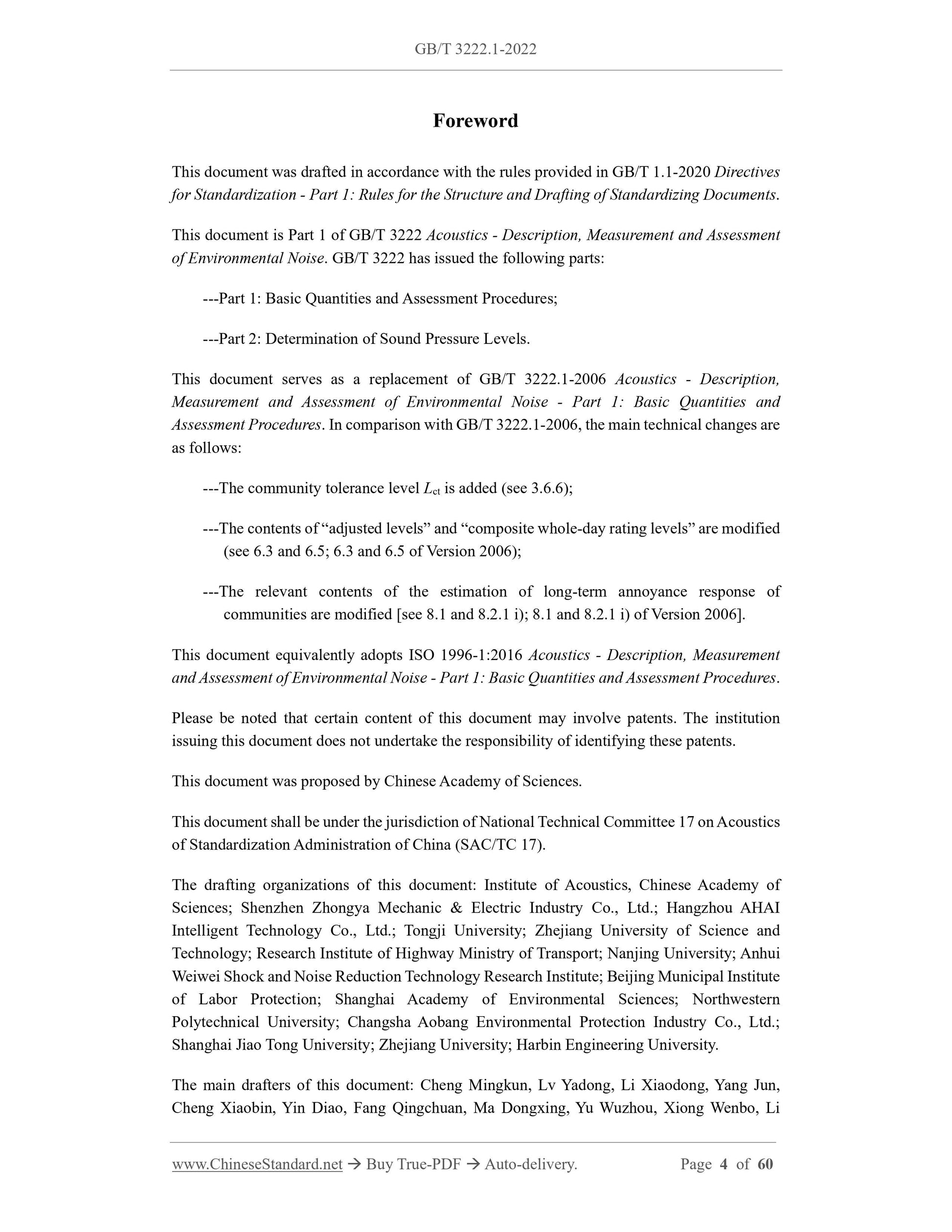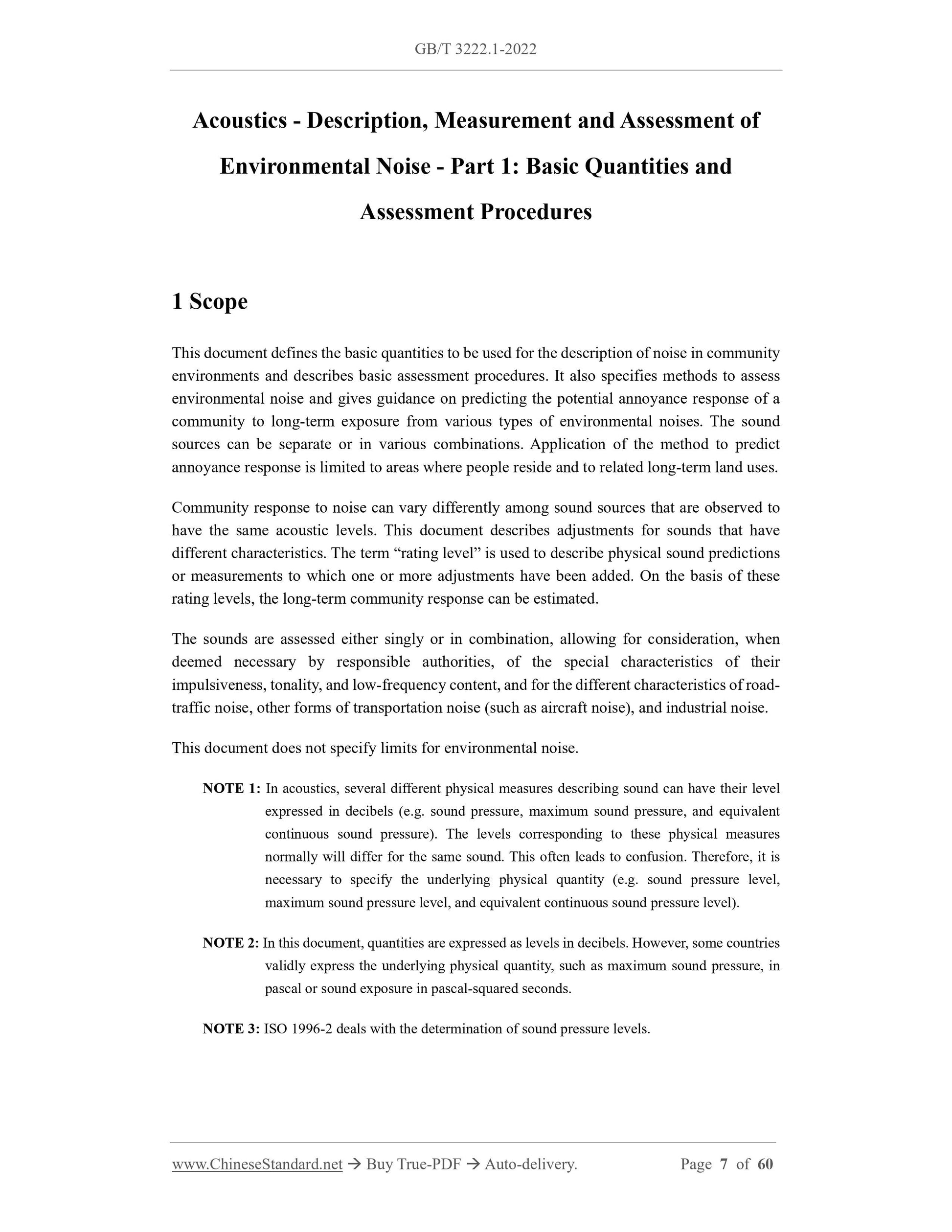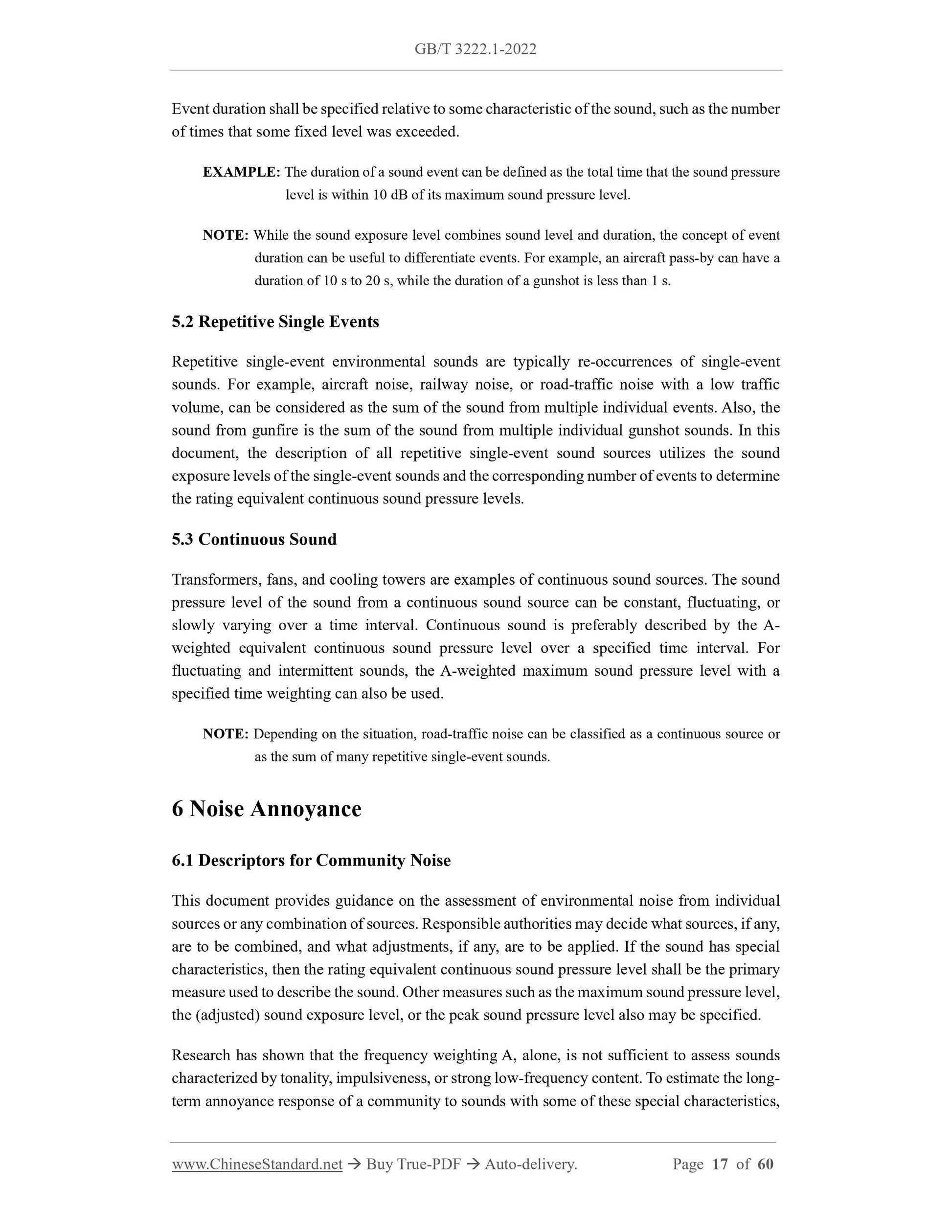1
/
of
6
www.ChineseStandard.us -- Field Test Asia Pte. Ltd.
GB/T 3222.1-2022 English PDF (GB/T3222.1-2022)
GB/T 3222.1-2022 English PDF (GB/T3222.1-2022)
Regular price
$605.00
Regular price
Sale price
$605.00
Unit price
/
per
Shipping calculated at checkout.
Couldn't load pickup availability
GB/T 3222.1-2022: Acoustics - Description, measurement and assessment of environmental noise - Part 1: Basic quantities and assessment procedures
Delivery: 9 seconds. Download (and Email) true-PDF + Invoice.Get Quotation: Click GB/T 3222.1-2022 (Self-service in 1-minute)
Newer / historical versions: GB/T 3222.1-2022
Preview True-PDF
Scope
This document defines the basic quantities to be used for the description of noise in communityenvironments and describes basic assessment procedures. It also specifies methods to assess
environmental noise and gives guidance on predicting the potential annoyance response of a
community to long-term exposure from various types of environmental noises. The sound
sources can be separate or in various combinations. Application of the method to predict
annoyance response is limited to areas where people reside and to related long-term land uses.
Community response to noise can vary differently among sound sources that are observed to
have the same acoustic levels. This document describes adjustments for sounds that have
different characteristics. The term “rating level” is used to describe physical sound predictions
or measurements to which one or more adjustments have been added. On the basis of these
rating levels, the long-term community response can be estimated.
The sounds are assessed either singly or in combination, allowing for consideration, when
deemed necessary by responsible authorities, of the special characteristics of their
impulsiveness, tonality, and low-frequency content, and for the different characteristics of road-
traffic noise, other forms of transportation noise (such as aircraft noise), and industrial noise.
This document does not specify limits for environmental noise.
NOTE 1: In acoustics, several different physical measures describing sound can have their level
expressed in decibels (e.g. sound pressure, maximum sound pressure, and equivalent
continuous sound pressure). The levels corresponding to these physical measures
normally will differ for the same sound. This often leads to confusion. Therefore, it is
necessary to specify the underlying physical quantity (e.g. sound pressure level,
maximum sound pressure level, and equivalent continuous sound pressure level).
NOTE 2: In this document, quantities are expressed as levels in decibels. However, some countries
validly express the underlying physical quantity, such as maximum sound pressure, in
pascal or sound exposure in pascal-squared seconds.
NOTE 3: ISO 1996-2 deals with the determination of sound pressure levels.
Event duration shall be specified relative to some characteristic of the sound, such as the number
of times that some fixed level was exceeded.
EXAMPLE: The duration of a sound event can be defined as the total time that the sound pressure
level is within 10 dB of its maximum sound pressure level.
NOTE: While the sound exposure level combines sound level and duration, the concept of event
duration can be useful to differentiate events. For example, an aircraft pass-by can have a
duration of 10 s to 20 s, while the duration of a gunshot is less than 1 s.
5.2 Repetitive Single Events
Repetitive single-event environmental sounds are typically re-occurrences of single-event
sounds. For example, aircraft noise, railway noise, or road-traffic noise with a low traffic
volume, can be considered as the sum of the sound from multiple individual events. Also, the
sound from gunfire is the sum of the sound from multiple individual gunshot sounds. In this
document, the description of all repetitive single-event sound sources utilizes the sound
exposure levels of the single-event sounds and the corresponding number of events to determine
the rating equivalent continuous sound pressure levels.
5.3 Continuous Sound
Transformers, fans, and cooling towers are examples of continuous sound sources. The sound
pressure level of the sound from a continuous sound source can be constant, fluctuating, or
slowly varying over a time interval. Continuous sound is preferably described by the A-
weighted equivalent continuous sound pressure level over a specified time interval. For
fluctuating and intermittent sounds, the A-weighted maximum sound pressure level with a
specified time weighting can also be used.
NOTE: Depending on the situation, road-traffic noise can be classified as a continuous source or
as the sum of many repetitive single-event sounds.
Basic Data
| Standard ID | GB/T 3222.1-2022 (GB/T3222.1-2022) |
| Description (Translated English) | Acoustics - Description, measurement and assessment of environmental noise - Part 1: Basic quantities and assessment procedures |
| Sector / Industry | National Standard (Recommended) |
| Classification of Chinese Standard | A59 |
| Word Count Estimation | 44,429 |
| Issuing agency(ies) | State Administration for Market Regulation, China National Standardization Administration |
Share
